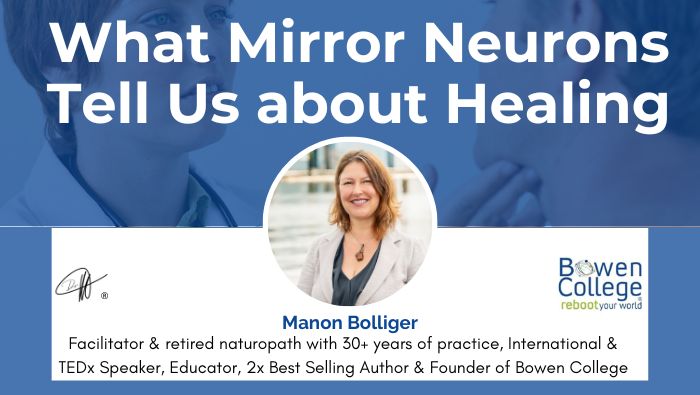This is a bit of a longer post, but I’ll ask you to hang in there with me. We’re covering complex, but really important stuff, here.
What we learned last post, about pain and perception, suggests that our therapeutic treatments, lacking research, may be onto something neurologically explicable. It always baffled me how, when treating one leg, the other responds, whether touched or not. Numerous patients say that while working on their “good” knee, the injured one experiences sensations of tingling or a flush of heat, which they interpret as, increased circulation. Again, this is an example of the patient’s mindful participation in the treatment, which significantly contributes to recovery.
This might be explained by the discovery of “mirror” neurons, which discharge not only during action execution, but also action observation. Research is postulating that these neurons are the substrate for action understanding. (Kilner et al., 2007)
This prospect raises the nature of intention and the ability to “understand” or “copy” the intention of another through observation. Since social interaction depends upon our ability to infer beliefs and intentions in others, a motor rendition of a visually learned observation assumes an intention to the observed movement. “The intention that is inferred from the observation of the action now depends upon the prior information received from a context level… The Mirror Neuron System (MNS) believes the reason for the observed movement is to ‘cure’.”(Kilner, 2007)
Therefore, the MNS is capable of inferring a unique intention, even if two intentions result in identical movements. This observation is supported empirically. Mirror neurons in the cortical area of the parietal frontal lobule, or PF, have been shown to have differential patterns of firing when viewing movements that are virtually identical at the kinematic level, but differ at the level of intention. (Kilner, 2007)
Thus, it appears that direct patient involvement in the healing process, through interpretation of the meaning of their symptomatology, as well as a clear visual formulation of their intention to potentiate a healing action, is a “prescription” that will yield the best results. The doctor’s role is to help educate and support the process.









